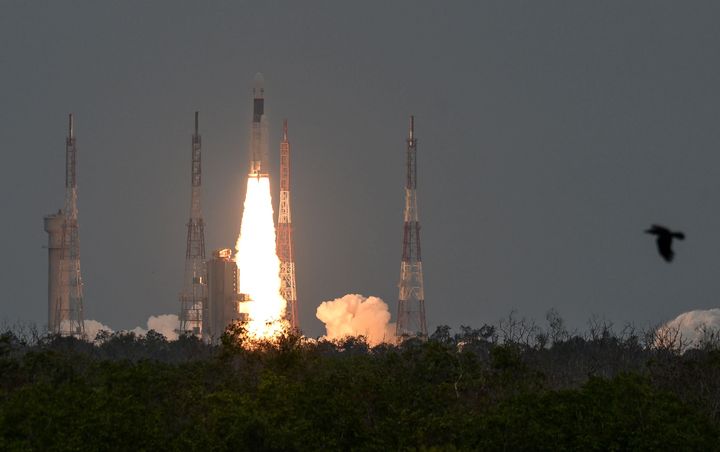
Almost a month after the Chandrayaan-2, the Indian Space Research Organisation (ISRO), on Tuesday, successfully placed the spacecraft into the lunar orbit as it gets closer to the moon.
For the latest news and more, follow HuffPost India on Twitter, Facebook, and subscribe to our newsletter.
NDTV reported that this was a challenging effort because if the Chandrayaan-2 approaches the moon at a velocity that is higher than expected it will “bounce off it and get lost in deep space” and if the velocity is too slow, the gravity of the moon may cause it to crash on its surface.
“It’s tomorrow morning (tentatively between 8.30 am and 9.30 am). It’s challenging,” ISRO chief K Sivan had told PTI on Monday on the operation to put the spacecraft in an orbit around the Moon.
The ISRO said it will carry out four more orbit manoeuvres to make the spacecraft enter into its final orbit passing over the lunar poles at a distance of about 100 km from Moon’s surface.
Subsequently, the Vikram lander will separate from the orbiter on September 2, according to the Bengaluru-headquartered space agency.
Two orbit manoeuvres will be performed on the lander before the initiation of powered descent to make a soft landing on the lunar surface on September 7, ISRO said.
Chandrayaan-2, launched on July 22 by GSLV MkIII-M1 vehicle, had entered the Lunar Transfer Trajectory on August 14 after final orbit raising manoeuvre of the spacecraft was successfully carried out.
The health of the spacecraft is being continuously monitored from the Mission Operations Complex (MOX) at ISRO Telemetry, Tracking and Command Network (ISTRAC) in Bengaluru with support from Indian Deep Space Network (IDSN) antennas at Byalalu, near Bengaluru.
All systems on board Chandrayaan-2 spacecraft are performing normal, ISRO said on August 14.
According to ISRO, Chandrayaan-2 India’s second lunar expedition will shed light on a completely unexplored region of the Moon, its South Pole.
“This mission will help us gain a better understanding of the origin and evolution of the Moon by conducting detailed topographical studies, comprehensive mineralogical analyses, and a host of other experiments on the lunar surface,” the space agency has said.
“While there, we will also explore discoveries made by Chandrayaan1, such as the presence of water molecules on the Moon and new rock types with unique chemical composition,” it said.
(With PTI inputs)